Standing on the stone towers of Vatheia, I felt silence settle over me like a heavy blanket. The village sits high on a hill in the Mani Peninsula, surrounded by wild olive groves and bare mountains.
Vatheia’s quiet, almost ghostly beauty leaves a mark on anyone searching for a glimpse of Greece’s mysterious past.
I wandered down narrow paths between crumbling mansions, passing shuttered windows and empty doorways. The wind seemed to carry old stories—feuds, families, and secrets—while all I really heard was a bird now and then, and my own footsteps.
If you crave travel that sparks curiosity and awe, Vatheia is absolutely worth the detour.

The Mythical Origins of Vatheia
Vatheia rises from the Mani Peninsula, ringed by rugged hills and distant sea. Exploring its story means following the trail of legendary watchtowers and the stubborn people who settled in this wild place.
Mani’s Rugged Landscape and Legendary Towers
As I walked through Vatheia, the landscape hit me—it’s harsh, but beautiful. Steep hills and rocky outcrops dominate everything.
Long ago, people built towers that rise above the stone houses, almost like they’re standing guard. Locals didn’t build these just to look impressive. They used them to defend against enemies and bandits. The tall, skinny towers let families spot trouble far off and hunker down behind thick stone walls.
Standing inside one, I could almost feel the old sense of safety. Mani’s towers stand for strength. They hint at pride, family feuds, and the need to stay safe when even the land itself felt tough.
Quick facts:
- Most towers date to the 18th and 19th centuries.
- Built with local stone, usually without mortar.
- Some reach over three stories high.
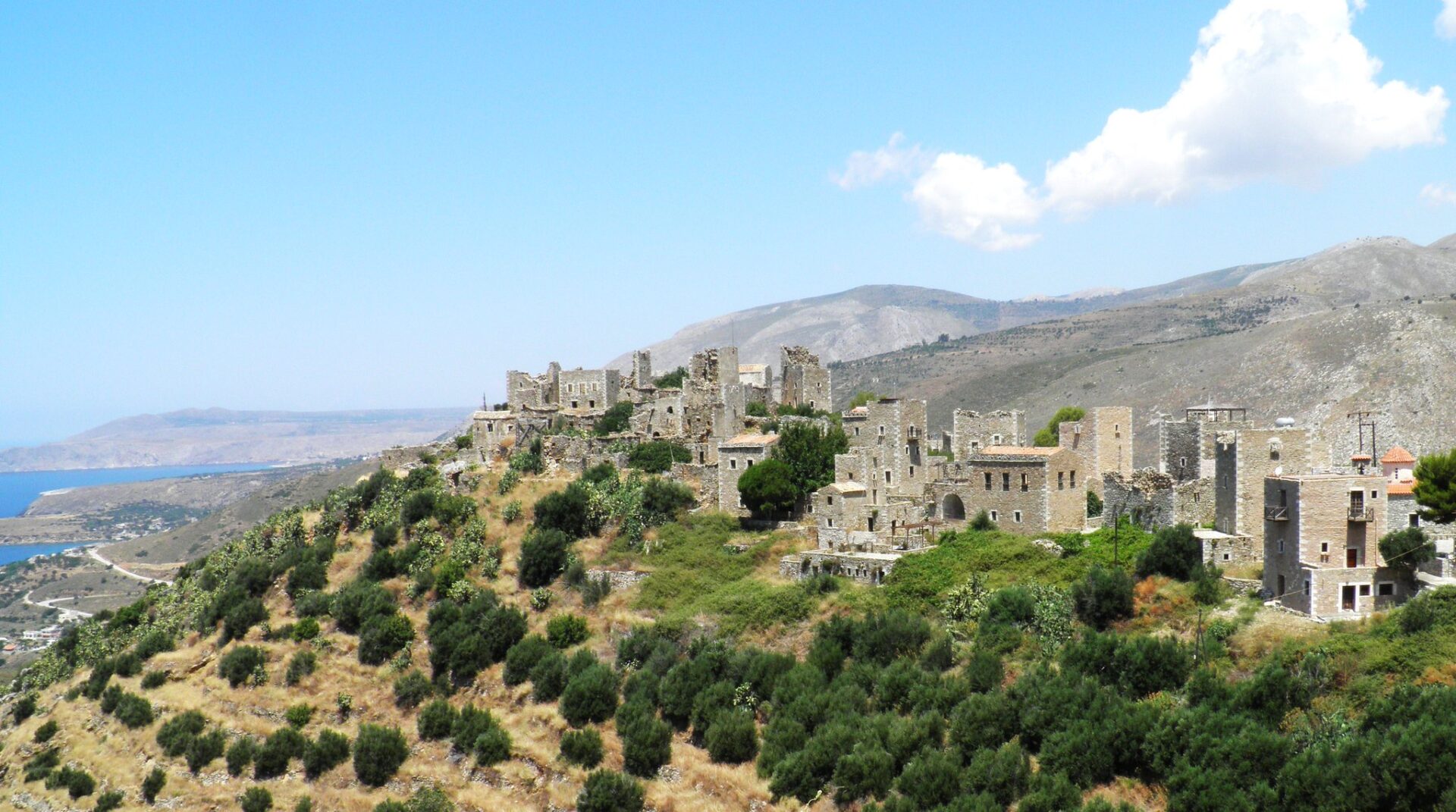
Early Settlers and Ancient Defenses
People came to Mani centuries before anyone built a tower. Legends say ancient Greeks hid out in these hills to escape invaders. Other stories tell of families fleeing war or persecution, choosing this region for its natural defenses.
From what I gathered, the first villagers defended themselves from pirates. They chose Vatheia’s hilltop for its high ground and wide views. Early houses were simple, but as danger grew, families started building upwards, creating the first stone towers.
Every evening, as I wandered the village, the past felt close. Stones under my feet held memories of those first settlers—people who built their lives around defense and community. Even now, these stones make Vatheia feel like a living legend.
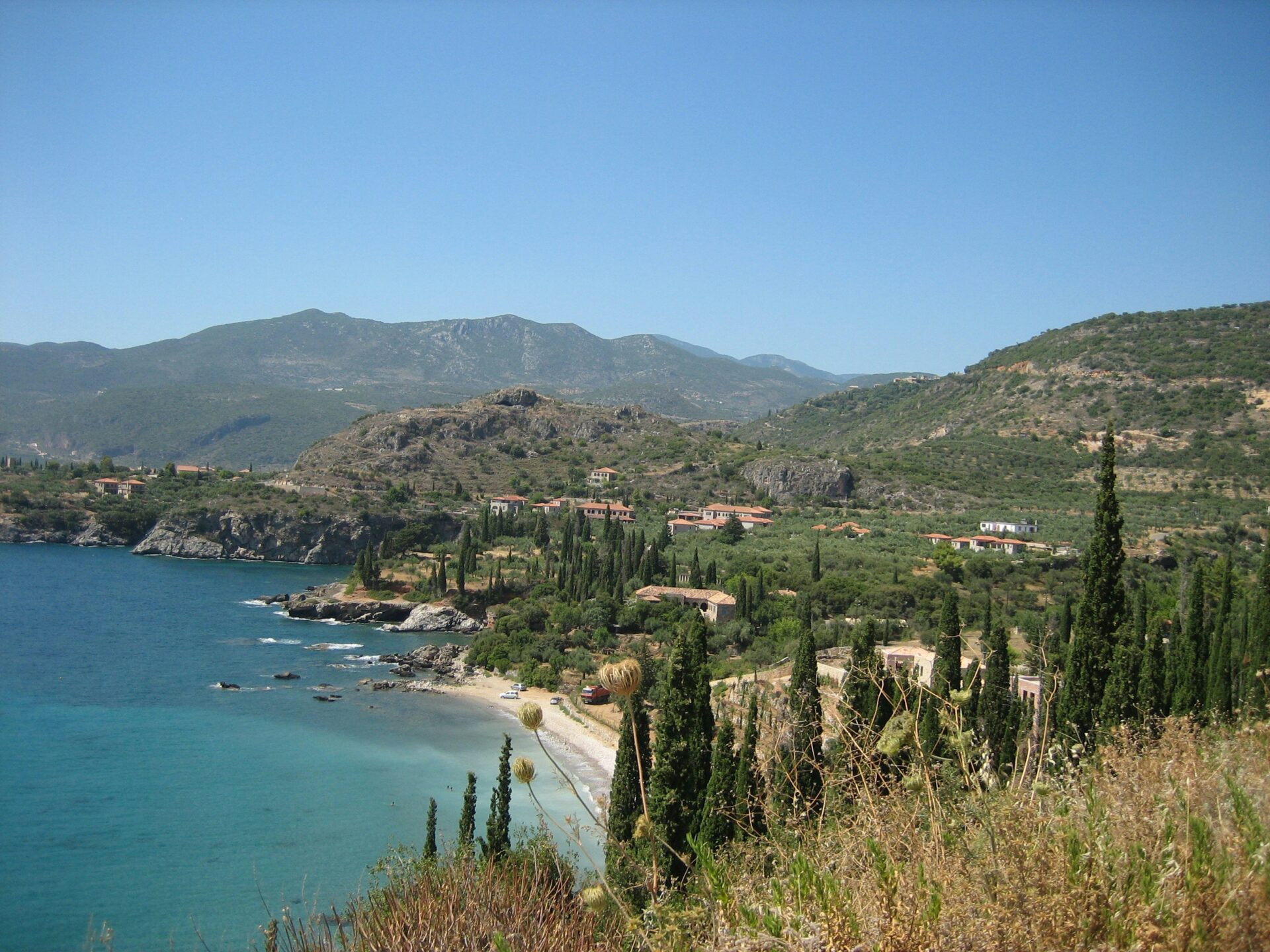
Towering Silence: Exploring Vatheia’s Stone Towers
When I arrived in Vatheia, the stillness made every sound—my footsteps, the wind—stand out. The village’s stone towers break up the landscape, mixing haunting beauty with centuries of craftsmanship.
Wandering Among Ghostly Towers
Walking Vatheia’s quiet lanes, I felt history pressing in. The towers—some crumbling, some sturdy—line the hillside like silent sentries. Shadows slip through empty doorways, and my footsteps echo in the silence.
Most towers are tall and rectangular, clustered together, with small windows for watching over the land. Many doors stood unlocked, and I couldn’t resist peeking inside. Some towers stretch four or five stories high, and the views from up top sweep over dry hills and blue sea.
The buildings show their age: cracked walls, fallen stones, wildflowers sneaking through crevices. I could picture the voices and lives that once filled these rooms. Visitors can wander almost anywhere—only a stray bramble or two gets in the way.
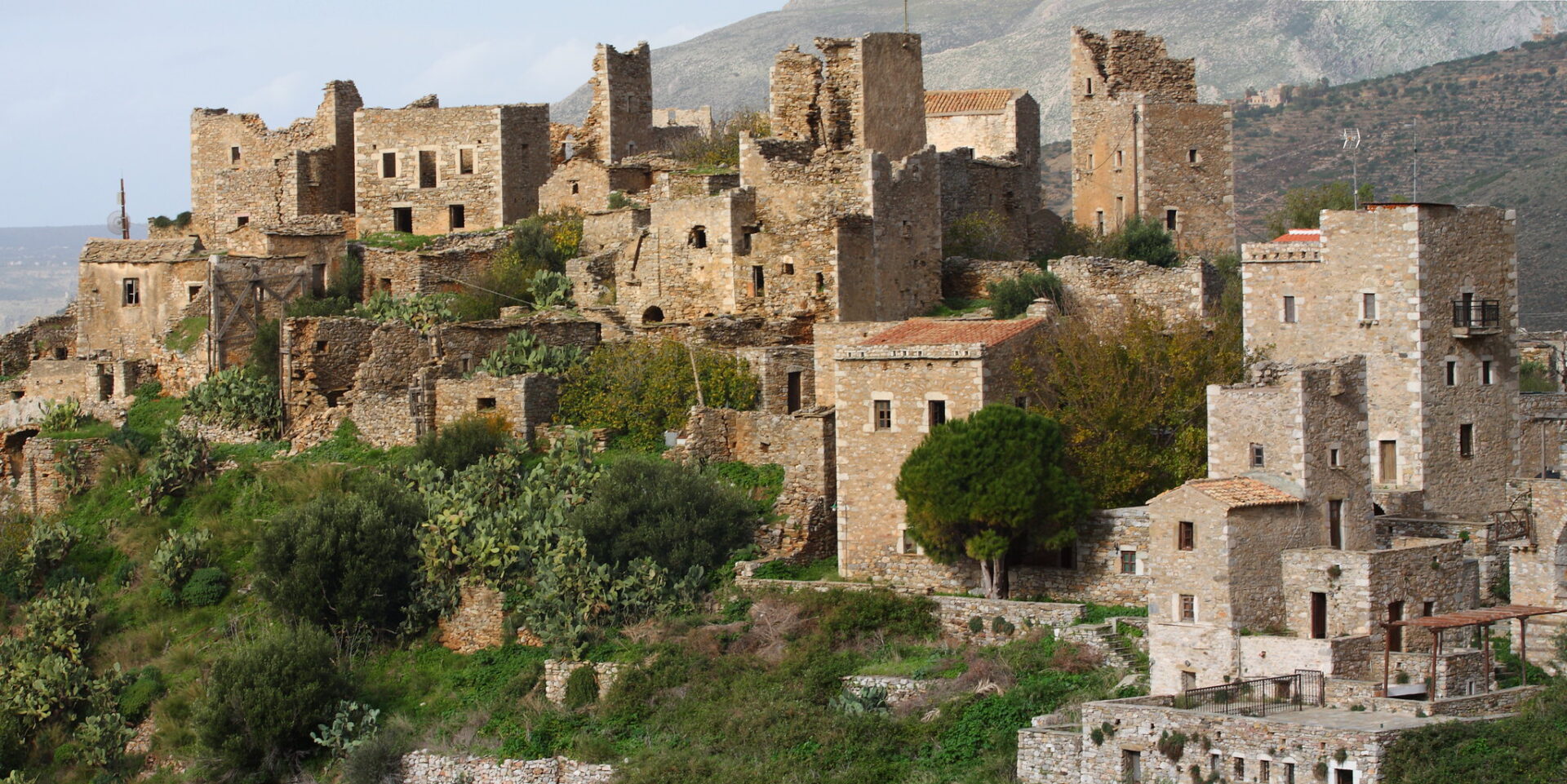
Unique Architecture and Stone Masonry
Every tower in Vatheia tells a story through its stonework. The stones are rough, but carefully stacked, with barely any mortar. I ran my hand over the walls—cool, worn smooth by time.
What sets these towers apart is their purpose. Maniots didn’t just build homes; they built fortresses for family feuds. Thick walls shielded families from enemies. Narrow window slits worked as lookouts and defenses. Some towers feature carved details near the doors—simple, but with a touch of pride or family history.
They used local stone, so the towers blend into the landscape—gray, brown, sandy shades. On sunny days, the towers almost glow, merging with the mountain earth. Even now, it’s obvious these were built to last.
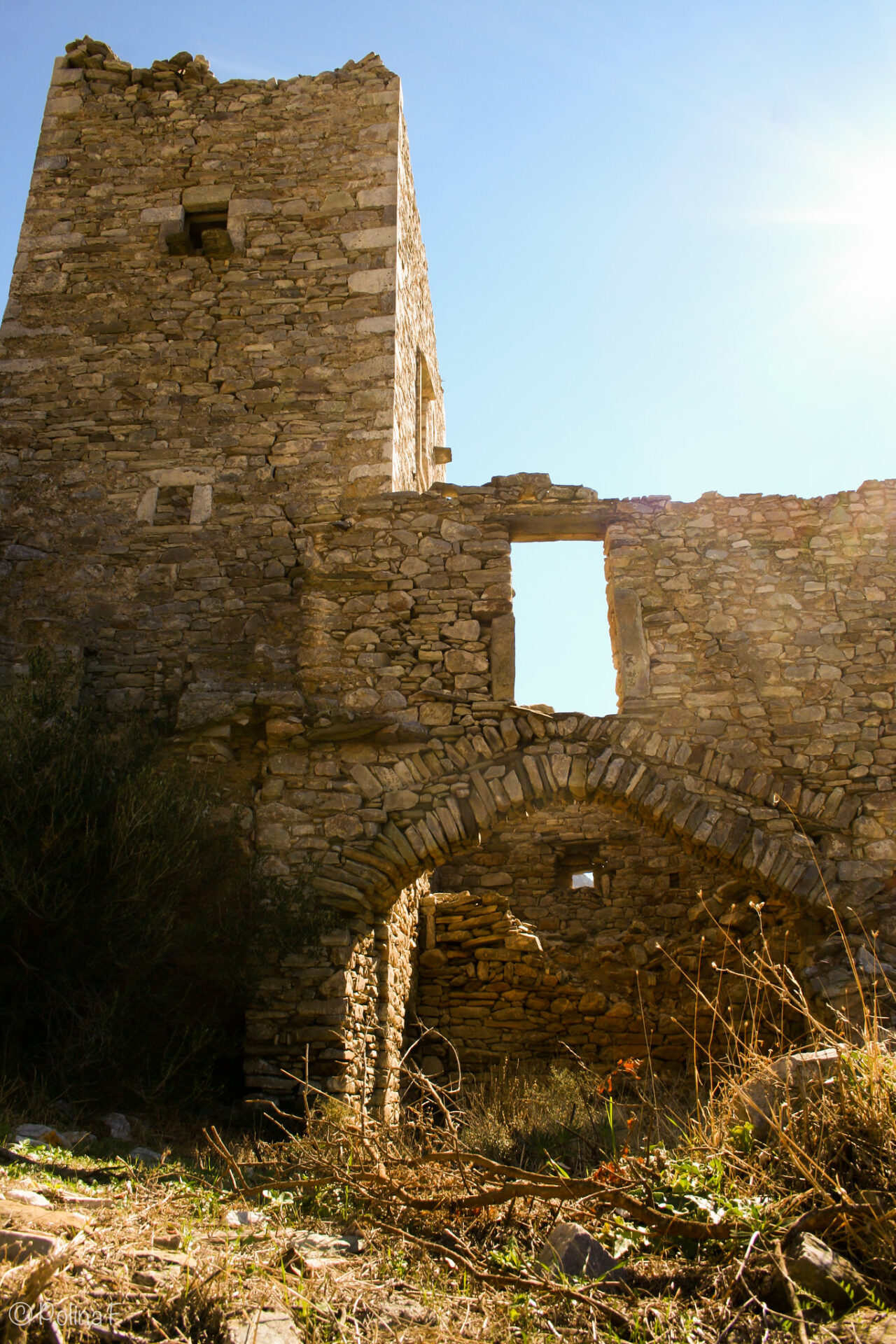
Why Silence Defines the Village
Silence in Vatheia feels different than anywhere else I’ve been. There’s almost nothing to break it—no crowds, no traffic, not even many voices. Just wind, and maybe a goat calling in the distance.
This stillness gives the village a peaceful, mysterious air. Under a tower’s shadow, I could hear everything—a bird’s wing, my breath, the crunch of dry grass. The calm pulls you in, making the past feel close.
Locals say silence is part of Vatheia’s soul. It encourages reflection and a sense of connection to old stories. For travelers who love quiet places with deep roots, this silence is something rare. I found myself slowing down, noticing more, and feeling the weight of time.
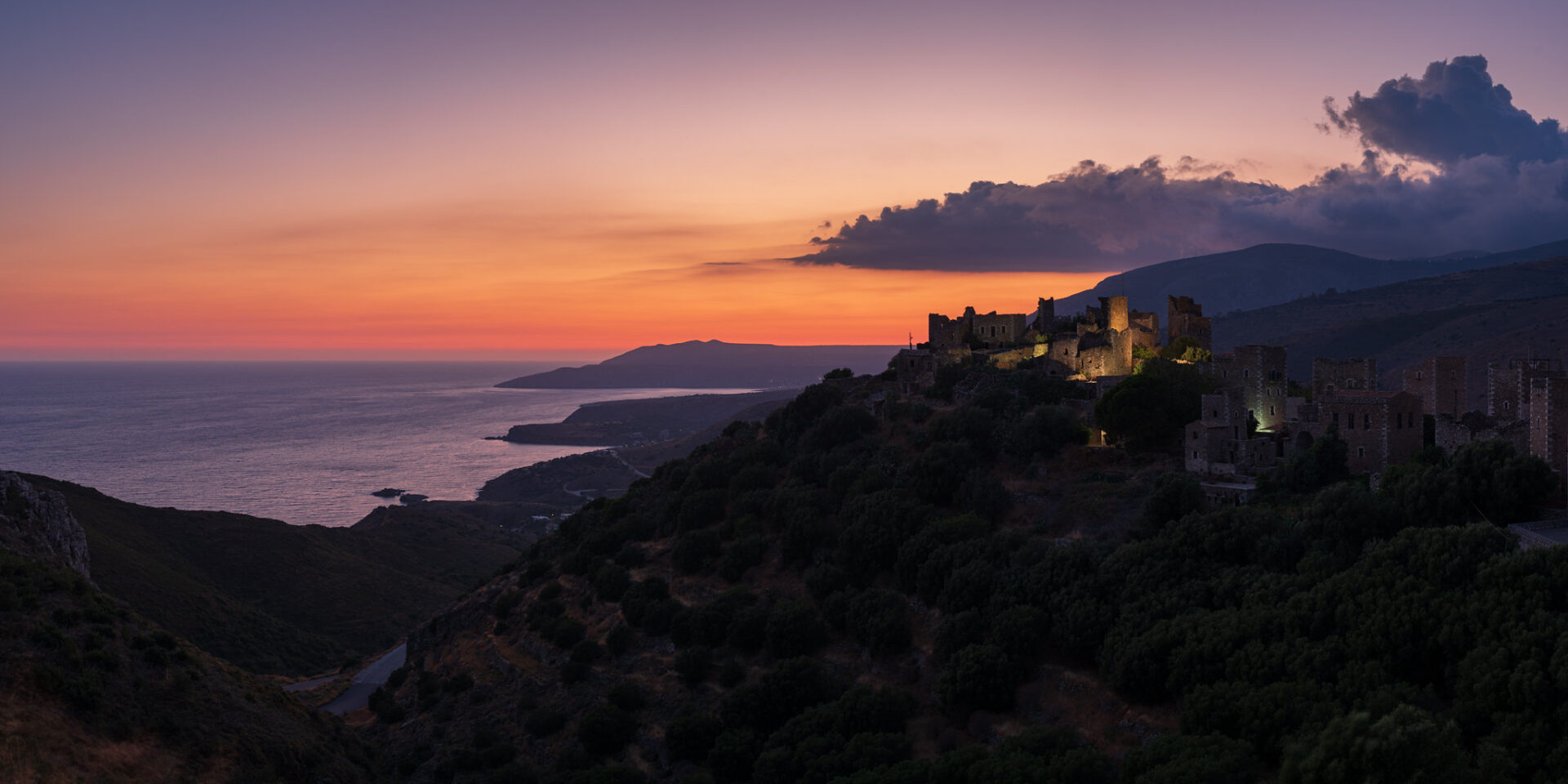
Vatheia’s Eerie Charms and Local Legends
As I wandered Vatheia, I couldn’t escape the mix of haunting silence and whispering winds. The stone towers cast long shadows, and every ruined corner seemed to hide secrets.
Chilling Ghost Stories Passed Down Generations
Locals told stories by firelight that stuck with me long after sunset. The most famous legend is about a bride, left waiting on her wedding day, who still wanders the ghostly towers at dusk. Some swear her soft singing drifts through the evening air.
Another story tells of rival families who fought bitter feuds right inside these walls. People claim their echoes remain—trapped in doorways and stairwells where nobody walks now. Sitting outside the towers in early morning, I listened to the hollow wind and wondered if it really carried old voices, or if my mind just ran wild.
Locals sometimes point out spots where strange things have happened. Visitors talk about sudden chills or seeing shadows dart by when no one’s around. Whether you believe or not, these stories give Vatheia an energy that turns a simple walk into something unforgettable.
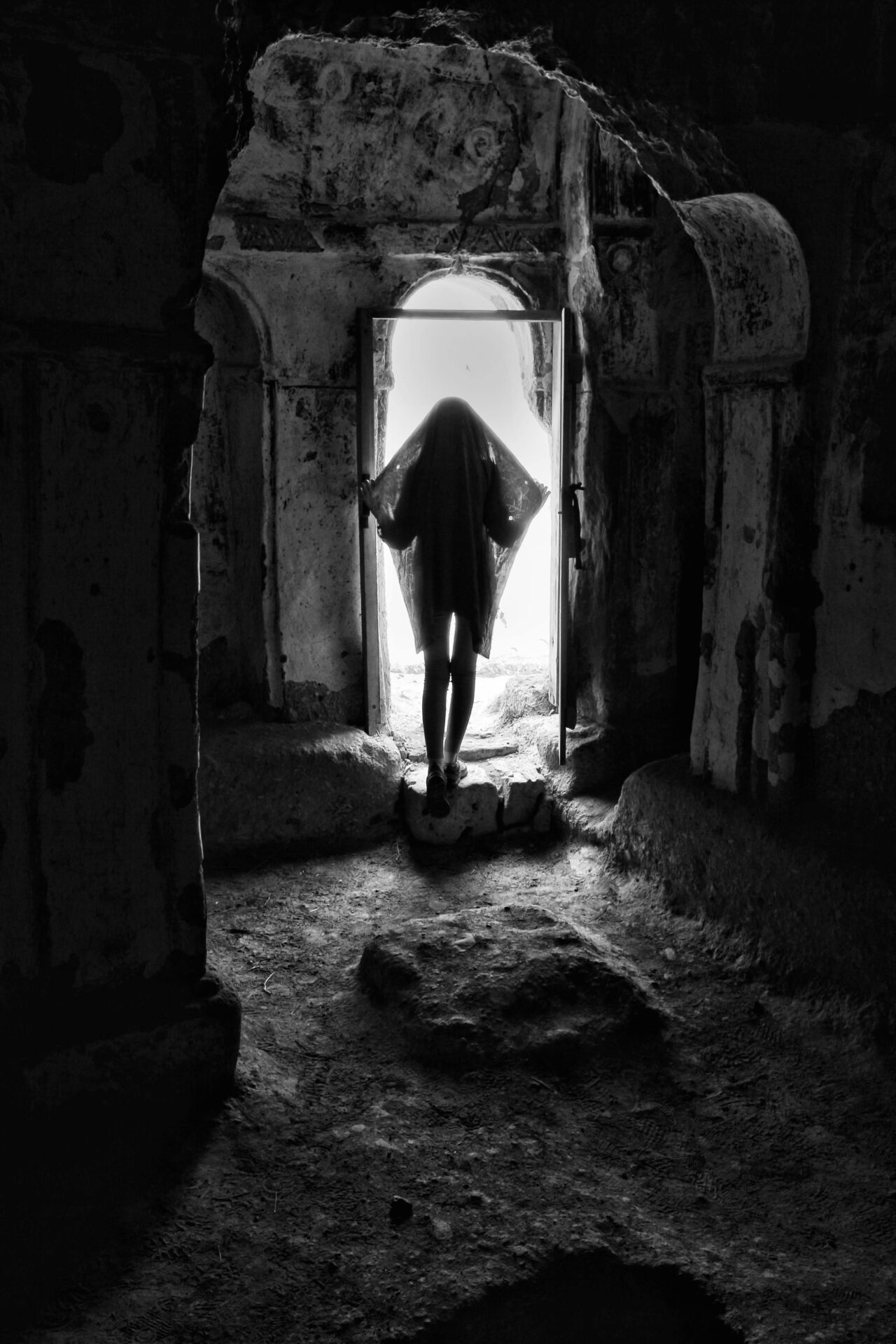
Whispers of Abandonment and Forgotten Lives
As I walked the narrow lanes, the weight of abandonment felt heavy. Family crests above doorways have faded, but if I looked closely, I could almost see the lives that once filled these homes. These aren’t just ruins—each empty window frames a story paused in time.
Many families left during hardship or war. Elders remember nights when whole households vanished, leaving bread on tables and letters under stones. Some say their spirits still keep watch.
It’s easy to lose track of time in cracked courtyards filled with wildflowers and grass. The past feels present, as if silence itself is whispering. These forgotten lives add layers to Vatheia, making it much more than just another empty village in the Mani hills.
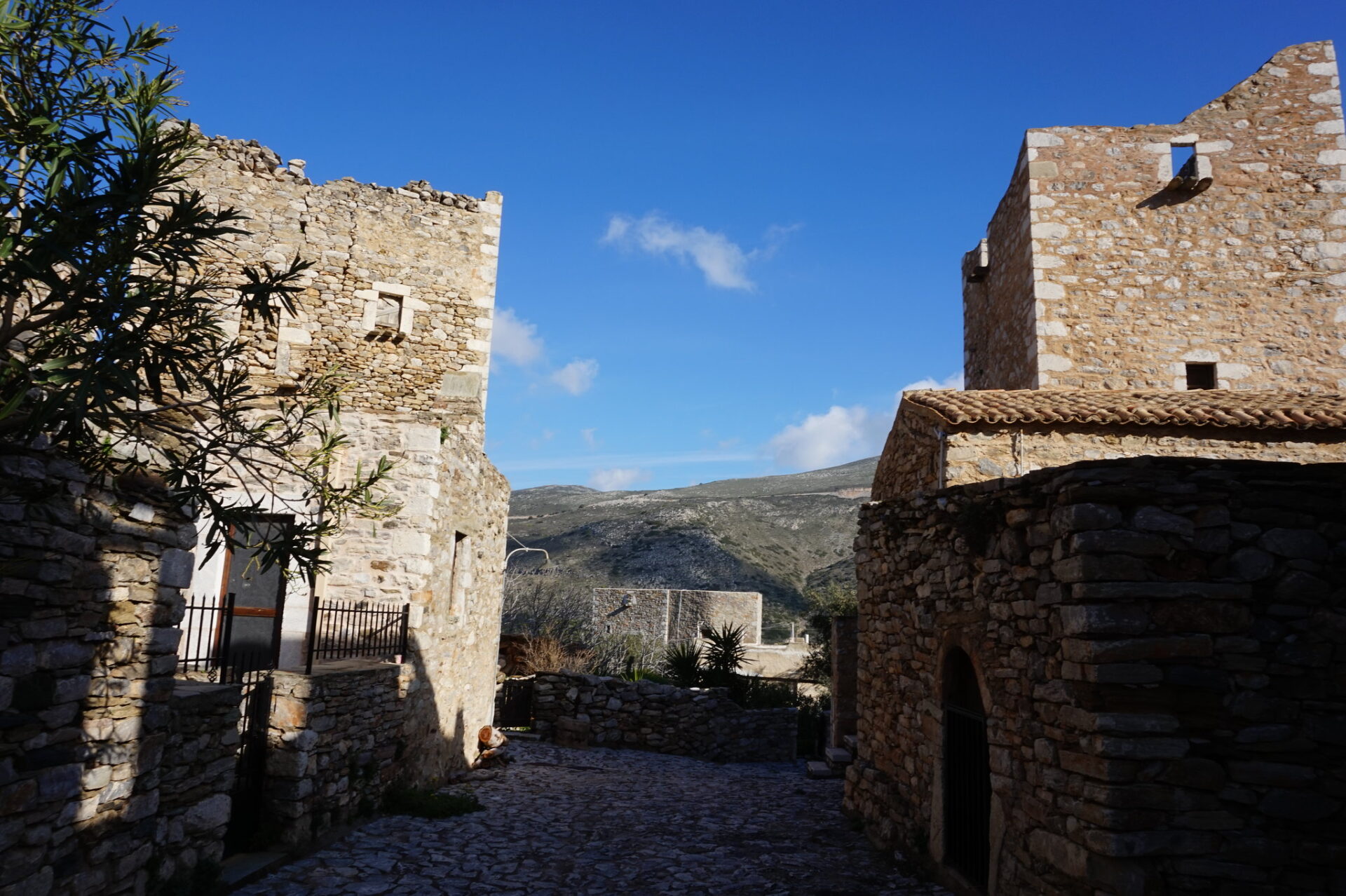
Traveling Through Mani’s Haunting Past
Winding roads, crumbling towers, and the wind weaving through ancient stones—this is the Mani Peninsula. Visiting Vatheia doesn’t feel like a regular scenic stop. It’s a way to touch a centuries-old world shaped by silence and history.
Planning a Visit to Vatheia
When I set out for Vatheia, I realized you need to prepare a bit. The village barely has any services—no hotels, hardly any stores, and almost no places to eat. I booked a guesthouse in Areopoli, a small town about 40 minutes away by car.
What to pack:
- Good walking shoes for steep, uneven paths
- Water and snacks, since shops are nonexistent
- Light layers, because the weather changes fast
Bring a camera—Vatheia’s old towers and olive groves are like nowhere else. I charged my phone and downloaded an offline map, since cell signal can vanish in these hills. If you want a guide, arrange it in Areopoli or Gythio before you go.

Navigating Local Roads and Nearby Sights
Getting to Vatheia felt like an adventure. The roads are narrow, winding, and sometimes have steep drop-offs. I drove slowly and let local cars pass when needed.
Parking sits just outside the village, in a gravel lot that fits a handful of cars. From there, I followed a footpath straight into the heart of the ghost village.
Not far from Vatheia, the coastline offers dramatic views. Cape Tenaro, southernmost tip of mainland Greece, is about a 45-minute drive south. I stopped in the port town of Gerolimenas for fresh seafood after exploring Vatheia.
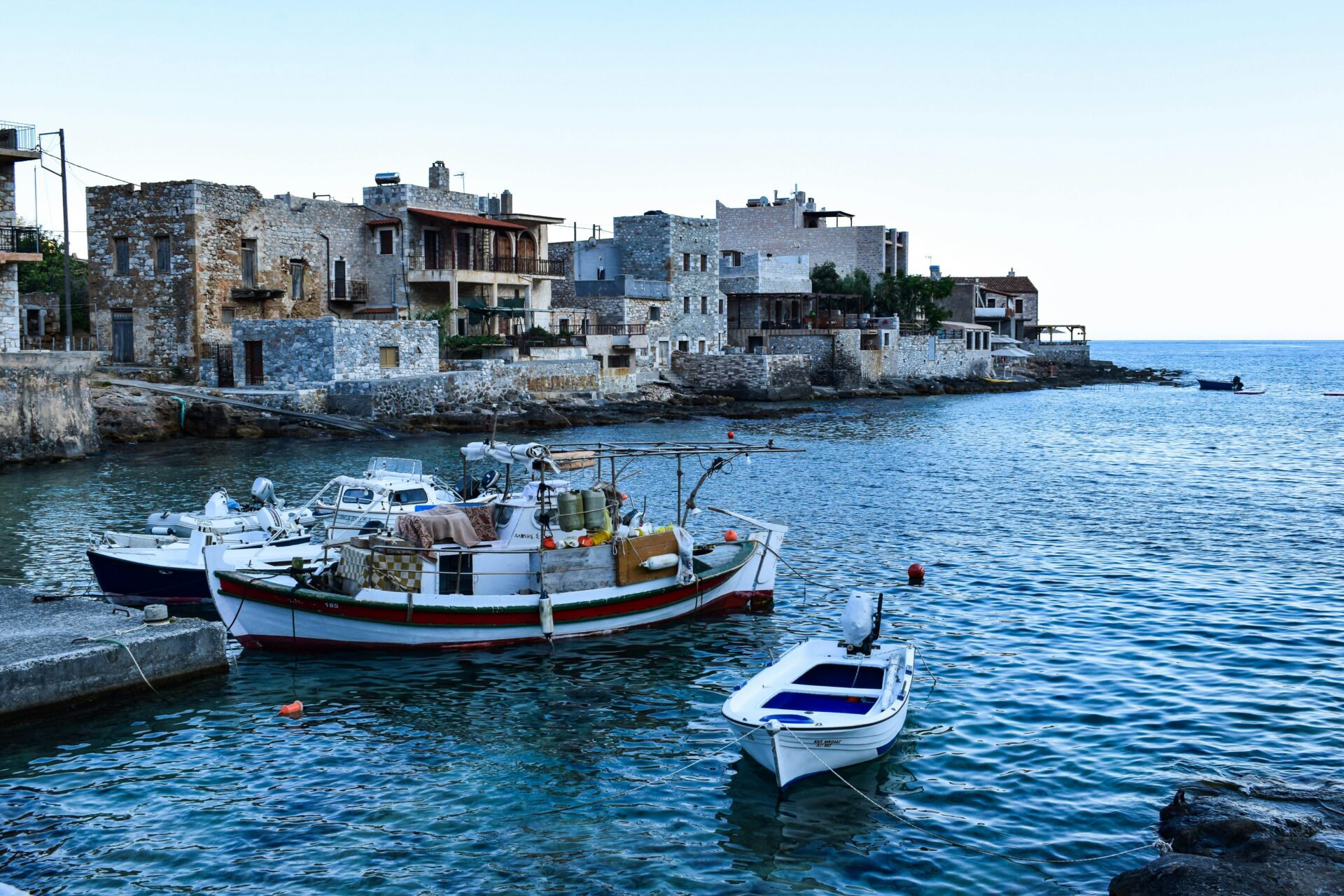
Best Times to Experience the Village’s Atmosphere
Vatheia’s mood shifts with the seasons. I found late spring and early autumn best for walking and photos. In May, wildflowers burst from cracks in the stones, and the air feels cool and clean.
Summers get hot and bright, so midday visits can be tough. I liked mornings or late afternoons for softer light, cooler air, and fewer tourists.
Visit during:
- Morning or late afternoon: Softer light, cooler air, and fewer people
- Weekdays: Quieter than weekends, especially outside tourist season
Sometimes, mist rolls in at dawn, making the village look truly unearthly. During tourist season, I arrived early to catch the silence before small groups showed up. Every time, the stillness stuck with me long after I left.
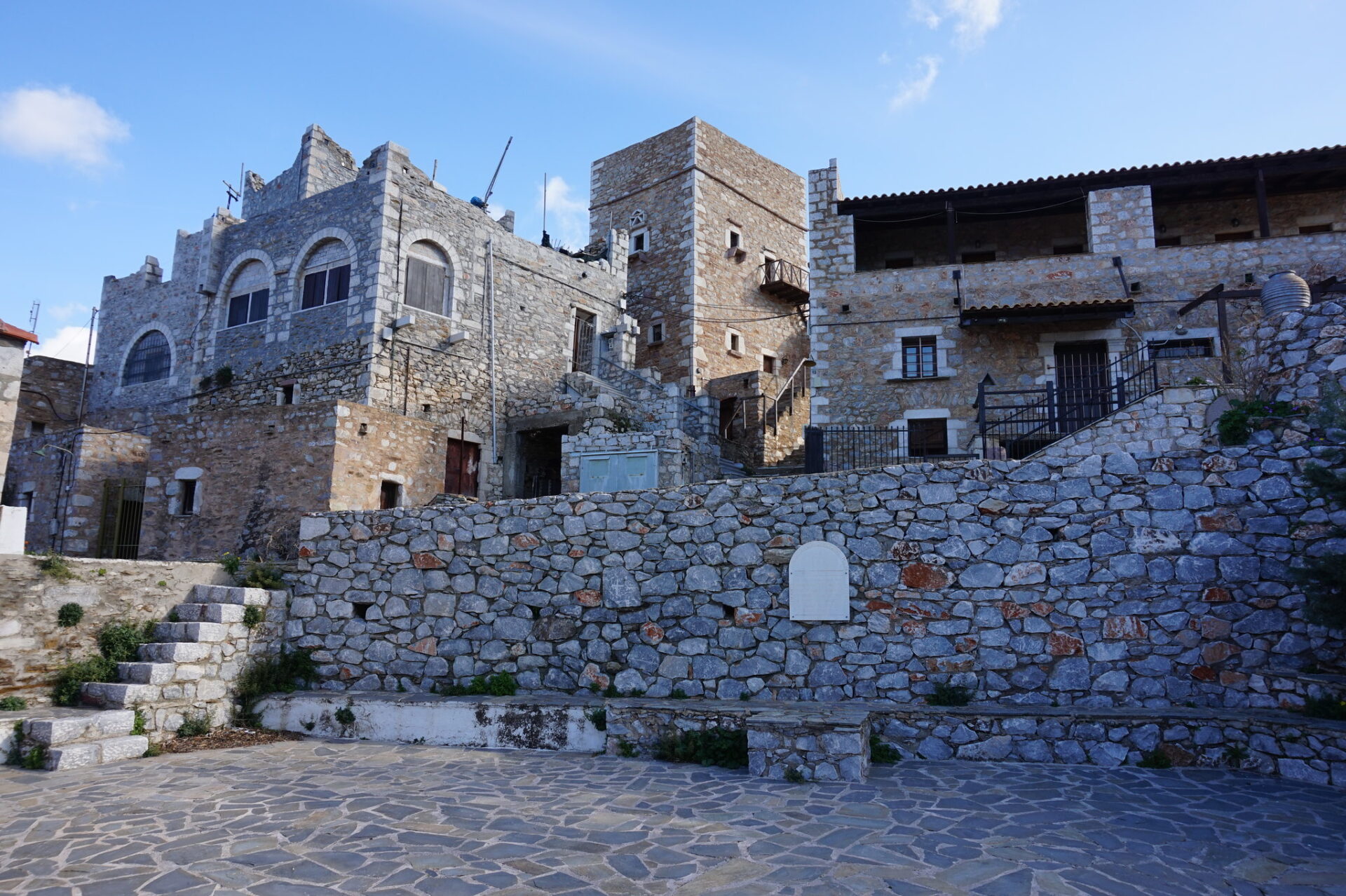
Capturing Beauty: Photography and Reflection
Vatheia’s quiet towers seem to beg for a photo. Time slows down among the ruins, and every shot captures a piece of Mani’s wild beauty.
Golden Hour in Mani’s Stone Labyrinth
Golden hour in Vatheia pulls me out with my camera every time. The setting sun lights up the towers and alleys, throwing long shadows that reveal every crack and hidden corner.
Colors change fast—the towers glow gold, then fade to soft pink. Each photo feels like a different mood entirely.
Morning light comes in cooler, sometimes with fog drifting through, wrapping everything in a gentle hush. That’s when the silence feels heaviest, and even tiny details stand out. Photographing Vatheia at these times gives me images full of emotion and depth.
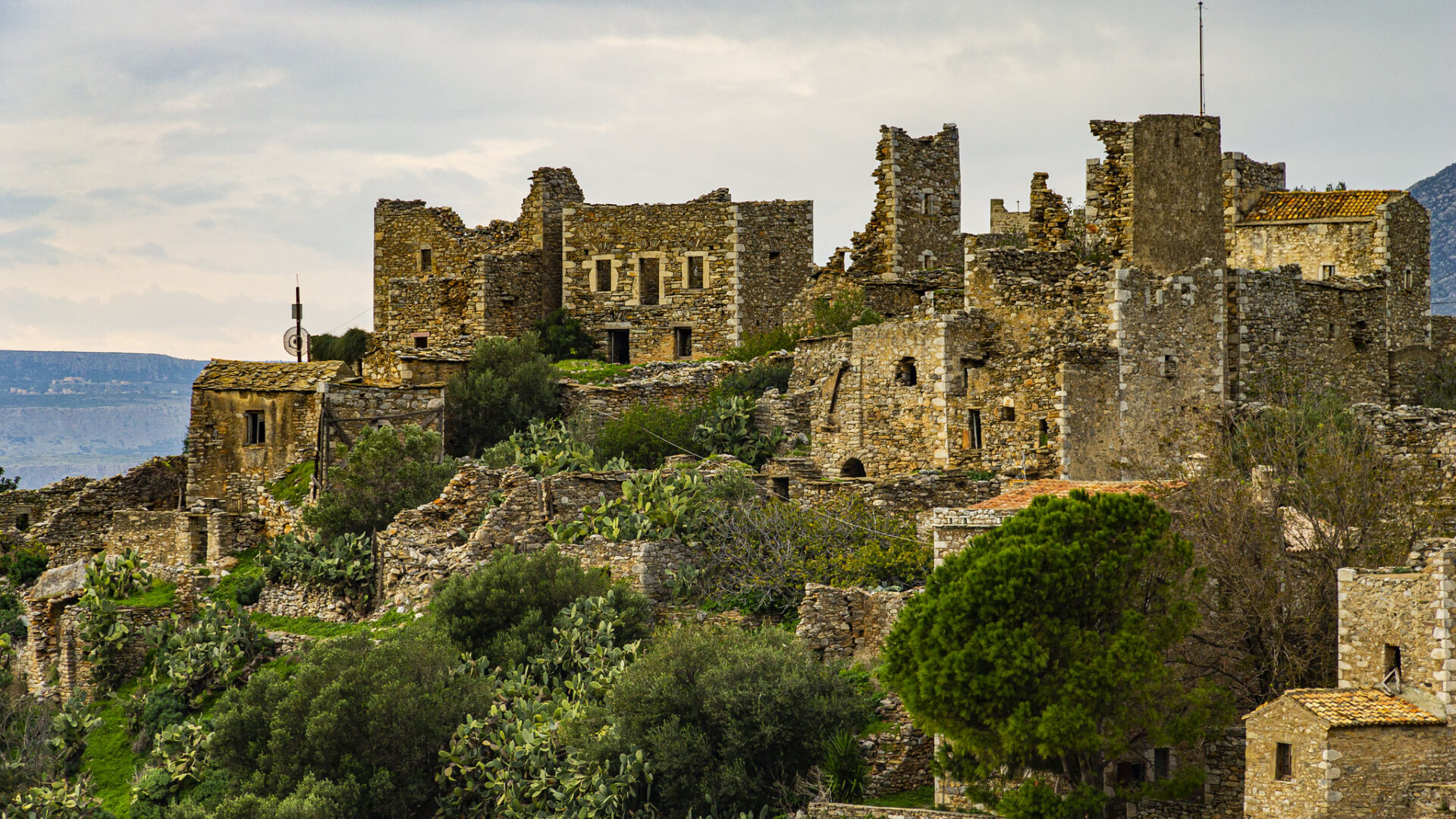
Tips for Evocative Photographs
When I want memorable photos, I slow down and notice the texture of every stone. Those empty windows, staring out at the wild Mani hills, always catch my eye.
I like to get close to the towers. That way, their rough surfaces and age really stand out. Wide shots? They show off the whole maze-like layout of the village.
I’m always hunting for contrasts—like bright wildflowers popping against old walls. Sometimes sunlight sneaks through broken roofs, and I try to capture that too.
I switch between landscape and portrait formats. It just feels right for telling the story of Vatheia, both past and present.
A basic packing list keeps things simple:
- Camera with a wide-angle lens
- Extra batteries (there aren’t any shops close by)
- Lightweight tripod for low-light shots
When I take time to wander and reflect, my photos feel more personal. The spirit of Vatheia seems to reveal itself when I’m patient, and honestly, I never know what I’ll find.

